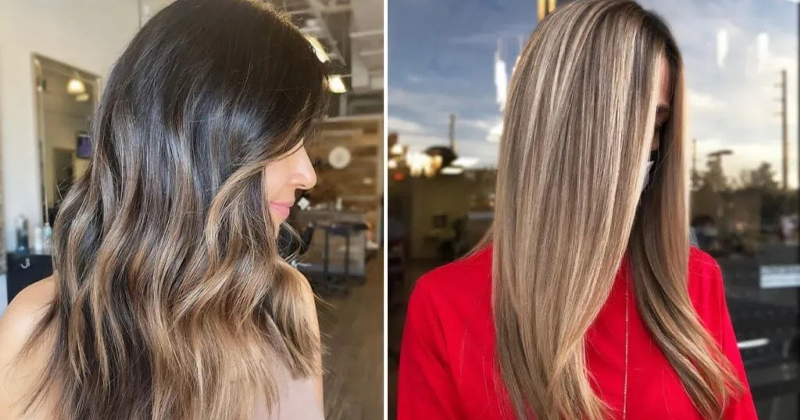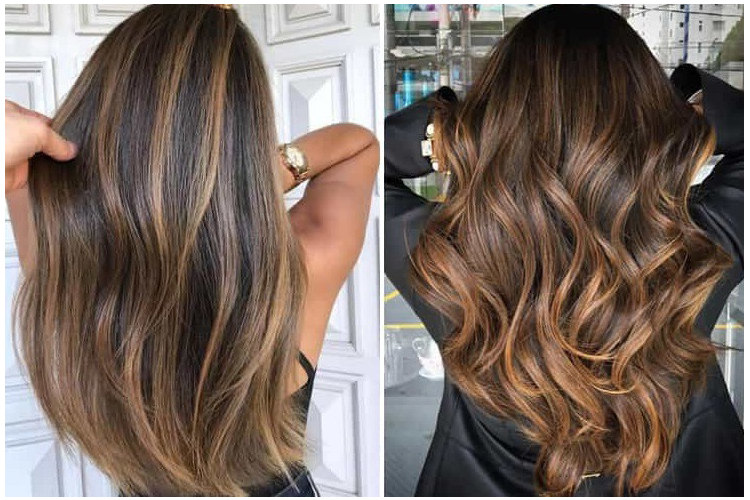
Balayage vs Highlights: What's the Difference?
If you’re planning to color your hair but are confused between balayage and highlights, you’ve come to the right place. We answer all your questions related to the balayage vs highlights debate.
Balayage involves applying a color to the hair to give it a warm look. On the other hand, aluminum foils are used to fix the hair section in strands. It gives a more intense look compared to balayage. Read on to learn more about them.
Hair Highlighting: A short background
Hair highlighting is a hair coloring process in which individual sections of hair are lightened. Any color can be used for highlighting, as long as it is lighter than the natural hair color. The highlighted sections versus the base hair color add visual appeal to the overall look.
Balayage is also a hair highlighting technique. However, there is a subtle difference between balayage and traditional foil highlights. The next sections cover the differences in more detail.

What is balayage?
The word balayage derives from the French word “balayer” which means “to sweep”. Balayage is a freehand painting technique that involves “smearing” color onto random sections of hair for a super blended, muted and warm, sun-kissed result.
The hair dye is applied differently than conventional highlights. The application is superfine (for blending) at the top of the hair section and gradually thickens as it moves through the midshafts to the ends. This creates natural-looking and gently curved highlights.
What are traditional slide highlights?
Traditional foil strands use aluminum foils to set and saturate the section of hair for an intense result. All thin sections are colored and individually wrapped in aluminum foil.
Unlike balayage, traditional foil highlights follow a textured pattern. Even the effect is more pronounced than with a balayage. However, slide highlights often need to be touched up.
But when it comes to hair transformations, a battle ensues between highlights and balayage, each offering their own benefits. Balayage is achieved through a sweeping freehand painting technique, while traditional highlights are achieved by applying bleach to specific sections of hair with aluminum foil. Balayage is a good option if you want a low-maintenance hair color that fades easily without creating a visible regrowth line. Highlights are best for creating stunning contrast and adding brightness.
In the next section, we highlighted some more important differences between a balayage and foil highlights.
Balayage vs Traditional Foil Highlights: Key Differences
- Application Process
Balayage follows a freehand painting technique. Therefore, the color application is rather random. Traditional slide highlights require a more structured approach. Sections are strategically planned by the barber to achieve the desired result.
- Bottom line
With balayage, the color is primarily concentrated on the top of each section while the bottom remains dark. This allows the colored sections to blend seamlessly with the hair for a more harmonious and natural effect.
Conventional foil highlights add intense strands to sections of hair for dramatic contrast.
- Application region
With balayage, the hair is highlighted from the middle to the ends. With traditional slide highlights, the sections are saturated from root to tip.
- Maintenance
Balayage requires less long-term maintenance because you can let it grow out more naturally. Traditional foil highlights need regular touch-ups to maintain the look while your hair grows back.
- Degree of personalization
The barbers can customize the balayage technique to highlight your facial features or frame your face. On the other hand, traditional slide highlights do not offer the possibility of personalization.
- Time required for the process
A simple balayage application can take 45 minutes. However, if you have long hair and want a layered balayage, it can take up to three hours. Traditional foil highlights can take 1-3 hours depending on the condition and status of your hair.
Still unsure which one to choose? Read on to clear up your confusion.

Balayage or Traditional Highlights: Which to Choose?
It all depends on personal taste and preferences.
Go for balayage if:
You want subtle highlights.
You have never dyed your hair.
You want low-maintenance results.
You want highlights that frame the face.
You want natural gray coverage.
Go for traditional highlights if:
You want distinctive and high-contrast color patterns.
You want a uniform hair color with multiple shades for a natural look.
You can commit to regular repairs and maintenance.
Whether you opt for balayage or traditional highlights, coloring your hair can damage your hair. Additionally, brassiness can be a problem on colored hair. In the next section we have listed a few tips for caring for your colored hair.
Tips for preventing hair damage and preserving hair color
Woman with highlighted hair at a salon for her appointment to maintain the highlights and texture of her hair. Save on computer
- Wet your hair
Switch to color-safe shampoos and conditioners. They are sulfate-free and help preserve hair color. Hair dyes contain chemicals that can dry out your hair. Use deep conditioners to moisturize your hair and seal the cuticle.
- Don’t miss salon appointments
Although balayage is low-maintenance compared to highlights, that doesn’t mean you can skip your hair care routine. For both treatments, visit the hair salon weekly to help lift, restore and nourish your hair.
Related Topics: How to Moisturize Your Hair: A Comprehensive Guide
- Avoid washing your hair frequently
Frequent shampooing can fade the color and dry out your hair, making it dry and brittle. If possible, wash your hair only once or twice a week. Also, use a purple shampoo every now and then to minimize the brassiness and keep the color fresh.
- Take care of your hair
Protect your hair from direct sunlight and stay away from chlorine or salt water. Avoid using heat styling devices. Use heat and UV protectants to prevent color fading and brassy hair. Optimal hair care is essential to control potential hair damage after chemical hair treatment.
In summary, balayage and traditional foil strands are two popular hair coloring techniques that produce different results. Balayage is a freehand painting technique that creates a natural, blended and sun-kissed effect, while traditional foil highlights use aluminum foil to create a more intense and textured look. Balayage requires less maintenance and allows for more personalized results, while traditional highlights offer stark contrast and multiple tones for a consistent color. Choosing between the two comes down to personal preference, desired outcome, and maintenance requirements. Regardless of the technique chosen, it’s important to take care of colored hair by using color-safe products, avoiding frequent washing, and protecting hair from damage caused by heat, sunlight, and chemicals.
trending now
Quick Links:
join the club
Categories:
COPYRIGHT © 2025 HOME ON THE GROVE.
